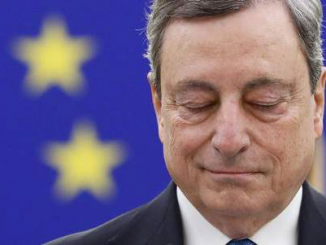
The fourteenth-century paintings of the Scrovegni Chapel in Padua and Montecatini Terme are now two more treasures listed as a World Heritage Site, with the total number of Italian sites risen to 57..
The announcement comes from Fuzhou, China, where the 44th World Heritage Committee is (virtually) underway, after a year of COVID-19 lockdowns.
Italy now tallies ahead of China, which until yesterday shared equal merit with Italy in the first place in the World Heritage ranking, with 55 recognised sites.
“Today is a historic day for Italy: Montecatini Terme is inscribed on the Unesco heritage list”, announced the Undersecretary for Culture, Lucia Borgonzoni.
The Tuscan site was included in ‘The Great Spas of Europe’ and is” an example of a unique Italian spa system, to be protected and enhanced. The recognition is the result of a demanding journey undertaken by the Ministry of Culture and the local authorities.
“The Great Spas of Europe” is a group of eleven spa towns in seven countries (Italy, Czech Republic, United Kingdom, France, Germany, Austria, Belgium), nominated as a “serial and transnational site” to offer an “exceptional testimony of an urban typology and an unprecedented cultural movement: the spa town”.
The Paduan site includes a complex of eight historic clusters of buildings, a group of landmark religious and secular complexes called “Padua Urbs Picta” within the walls of Padua (“Padova” in Italian).
The buildings are home to what UNESCO called “a selection of fresco cycles painted between 1302 and 1397 by different artists for different types of patrons and within buildings of diverse functions.”
Minister for Culture Dario Franceschini released a note highlighting the importance of the UNESCO listing. “With Padova Urbs Picta and Montecatini among the great spa cities of Europe, – notes Franceschini – the Italian sites registered in the World Heritage list become 57: together with the 14 registered in the representative list of the intangible heritage of humanity, the UNESCO recognitions become 71 concerning the Italian cultural heritage.
Padua therefore becomes, together with Tivoli, one of the few cities in the world to keep two of them: a primacy that strengthens Italy’s cultural leadership, reaffirms the vastness of the national cultural heritage and recognises the role of communities in the protection and promotion of their assets “.
The “serial site” Urbs Picta includes all the precious large frescoed cycles of the fourteenth century preserved in eight buildings and monumental complexes of the city:
- Scrovegni Chapel
- Church of Santi Filippo and Giacomo agli Eremitani
- Palazzo della Ragione
- Chapel of the Reggia Carrarese
- Baptistery of the Cathedral
- Basilica and the Convent of Sant’Antonio
- Oratory of San Giorgio and the Oratory of San Michele
During the 14th century, some of the most extraordinary artists of the time frescoed the walls of these places. Giotto, created his absolute masterpiece with the frescoes of the Scrovegni Chapel; Guariento di Arpo, Giusto de ‘Menabuoi, Altichiero by Zevio, Jacopo Avanzi and Jacopo da Verona.
The nomination was promoted by the Municipality of Padua together with the other three entities that own the buildings and monumental complexes that preserve the frescoed cycles.
Together with the Veneto Region, the nomination was coordinated for Italy by the Ministry of Culture with the Permanent Representative of Italy in Paris, the Ministry of Foreign Affairs and International Cooperation.




Be the first to comment